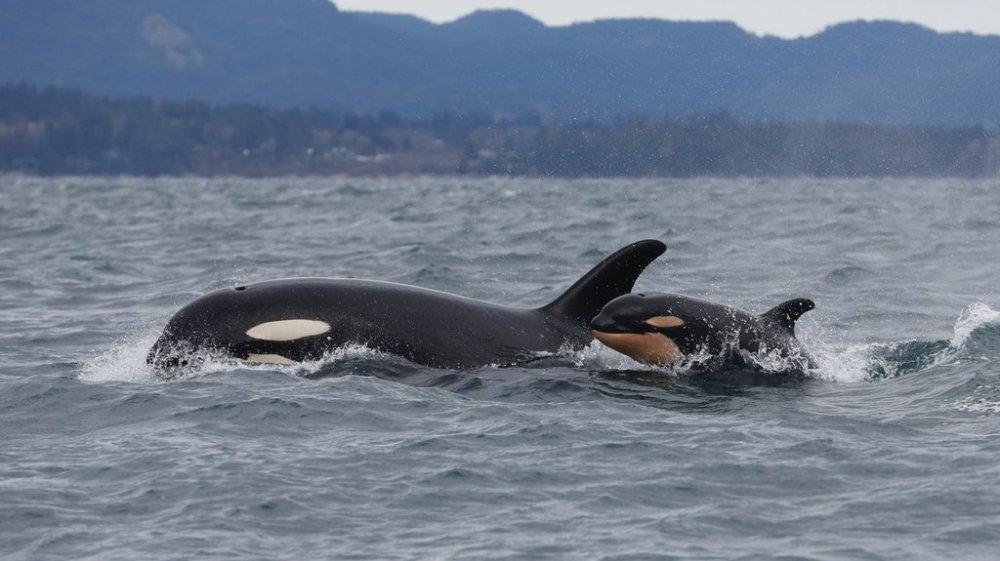Science
Southern Resident Killer Whales Face Decline Without Action

A recent survey reveals concerning trends among the endangered southern resident killer whales, indicating a plateau in their population and a gradual decline that could lead to their disappearance if stronger conservation measures are not implemented. Michael Weiss, a director at the Center for Whale Research, highlighted several factors contributing to this troubling trend during the release of the annual survey on October 13, 2025.
The survey, conducted as of July 1, shows a slight increase in the population, which now stands at 74 whales, up by one from the previous year. While researchers documented four births across all three distinct pods, only two calves survived. Weiss emphasized that the southern residents are not on the brink of extinction in the immediate future, but warned that there is a significant risk of losing at least one pod within the next 50 years if current conditions persist.
Declining populations of chinook salmon, increasing pollutants, and noise from maritime traffic, including cruise ships and tankers, are primary threats to the orcas’ habitat off the coasts of Washington state and British Columbia. Weiss explained, “The population is very inbred, very low genetic diversity, which is probably causing some issues for survival and resilience towards disease.”
The survey highlights troubling reproductive patterns within the pods. Of the 27 males of reproductive age—those older than 10 years—only a limited number are successfully breeding. The oldest male in the K pod, known as K26, was recently reported missing, marking a significant loss given that he had successfully reproduced in the past. Weiss noted, “The only pod that’s growing is J pod,” which has maintained a lower mortality rate in recent years.
In contrast, the K pod is in a precarious state, with only 14 members remaining, the lowest number recorded in the survey’s 50-year history. Weiss pointed out that the last successful birth in K pod occurred in 2022, and prior to that, there had been a decade-long gap. The reproductive rate among female southern residents is significantly lower than that of their northern counterparts, with calf mortality rates around 50 percent in the first year of life.
The survey also noted an alarming demographic trend, with just 11 immature whales younger than 10 years, comprising merely 15 percent of the southern residents’ population. In contrast, immature orcas make up 47 percent of the northern resident population, which is currently experiencing growth.
Weiss underscored the necessity of restoring chinook salmon habitats and adjusting fisheries management as critical steps toward the recovery of the southern residents. “If you’re fishing out in the ocean where everything’s mixed up, it’s really hard to avoid taking fish from these declining populations,” he stated.
Urbanization of the southern residents’ habitat further complicates their survival, as these whales often hunt in areas heavily trafficked by ships. Weiss likened their predicament to “trying to find food on a highway,” illustrating the significant challenges they face in their quest for sustenance.
As conservationists and researchers call for immediate action, the future of the southern resident killer whales hangs in the balance. Without significant intervention to address habitat loss and declining salmon populations, the survival of these iconic marine mammals remains uncertain.
-

 Lifestyle1 month ago
Lifestyle1 month agoWinnipeg Celebrates Culinary Creativity During Le Burger Week 2025
-

 Health2 months ago
Health2 months agoMontreal’s Groupe Marcelle Leads Canadian Cosmetic Industry Growth
-

 Science2 months ago
Science2 months agoMicrosoft Confirms U.S. Law Overrules Canadian Data Sovereignty
-

 Education2 months ago
Education2 months agoRed River College Launches New Programs to Address Industry Needs
-

 Technology2 months ago
Technology2 months agoDragon Ball: Sparking! Zero Launching on Switch and Switch 2 This November
-

 Science2 months ago
Science2 months agoTech Innovator Amandipp Singh Transforms Hiring for Disabled
-

 Technology5 days ago
Technology5 days agoDiscord Faces Serious Security Breach Affecting Millions
-

 Technology2 months ago
Technology2 months agoGoogle Pixel 10 Pro Fold Specs Unveiled Ahead of Launch
-

 Science2 months ago
Science2 months agoChina’s Wukong Spacesuit Sets New Standard for AI in Space
-

 Technology2 months ago
Technology2 months agoWorld of Warcraft Players Buzz Over 19-Quest Bee Challenge
-

 Business2 months ago
Business2 months agoDawson City Residents Rally Around Buy Canadian Movement
-

 Technology7 days ago
Technology7 days agoHuawei MatePad 12X Redefines Tablet Experience for Professionals
-

 Business2 months ago
Business2 months agoNew Estimates Reveal ChatGPT-5 Energy Use Could Soar
-

 Science2 months ago
Science2 months agoXi Labs Innovates with New AI Operating System Set for 2025 Launch
-

 Education2 months ago
Education2 months agoAlberta Teachers’ Strike: Potential Impacts on Students and Families
-

 Technology2 months ago
Technology2 months agoInnovative 140W GaN Travel Adapter Combines Power and Convenience
-

 Technology2 months ago
Technology2 months agoFuture Entertainment Launches DDoD with Gameplay Trailer Showcase
-

 Technology2 months ago
Technology2 months agoGlobal Launch of Ragnarok M: Classic Set for September 3, 2025
-

 Technology2 months ago
Technology2 months agoNew IDR01 Smart Ring Offers Advanced Sports Tracking for $169
-

 Technology2 months ago
Technology2 months agoArsanesia Unveils Smith’s Chronicles with Steam Page and Trailer
-

 Science2 months ago
Science2 months agoNew Precision Approach to Treating Depression Tailors Care to Patients
-

 Technology2 months ago
Technology2 months agoHumanoid Robots Compete in Hilarious Debut Games in Beijing
-

 Business2 months ago
Business2 months agoBNA Brewing to Open New Bowling Alley in Downtown Penticton
-

 Health2 months ago
Health2 months agoGiant Boba and Unique Treats Take Center Stage at Ottawa’s Newest Bubble Tea Shop









